

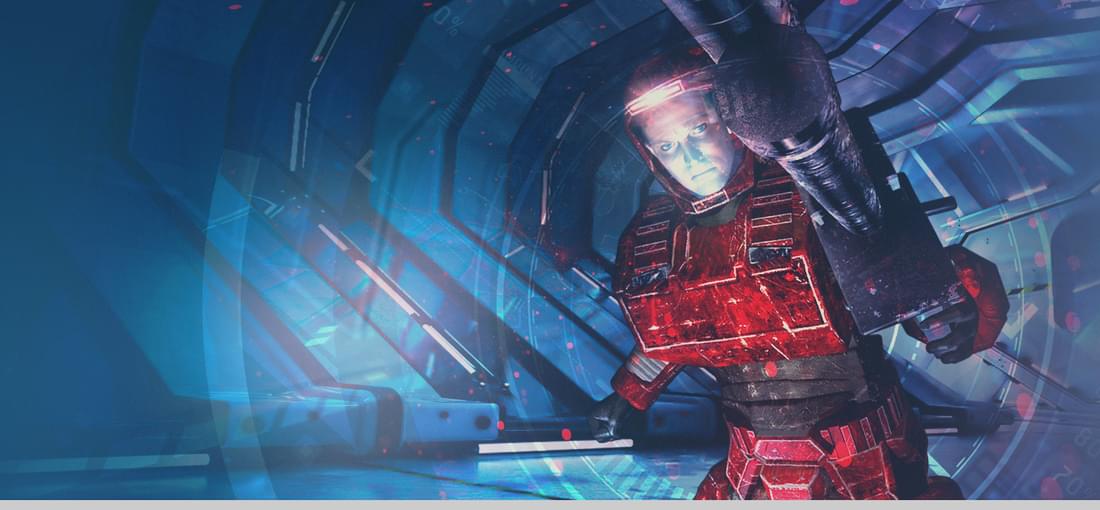
First of all, if you want to get this running properly on a modern system, make sure to install the latest version of the Dash Faction patch, which fixes many bugs and issues otherwise preventing the game from working properly. Built from the scraps of what was supposed to be Descent 4, Red Faction is the definition of a decent FPS. On paper, Red Faction had several innovative features, but in practice, these don't leave much of an impression. Most notably, the much-touted GeoMod engine with its destructible environments is largely underused, as the destruction only makes sense, and often is only possible, in designated spots, which typically are required for progression. Creativity is neither intended nor possible—for instance, there was a part where two bridges were separated by a chasm, and I thought it would be possible to destroy the steel beams holding the bridge on the other side, so that I could jump over. It wasn't possible, and the bridge didn't even have a scratch after multiple rocket hits. The vehicle sections are functional, but rather short and not too exciting, and the final APC section controls horribly. There is also a stealth section, but it's very short and far from interesting mechanically. The gunplay is somewhat hampered by the fact that guns are terribly inaccurate. Coupled with enemies strafing heavily, it's not uncommon to have one's crosshair locked onto an enemy, yet miss every single bullet in a mag. Later on, one is given more precise and powerful weaponry at last, which is sorely needed due to opposition being much fiercer during the last third of the game. On hard difficulty, the game is definitely challenging, which is a good thing, since the game is seriously short at less than five hours. All these issues aside, I still found myself entertained playing Red Faction. The level design is fairly creative, the setting original, and the pacing of the plot never slows down until the very end. Worth it on sale.
Volition has never shied away from trying their hands at new genres, and Summoner is their take on a more lightweight CRPG. You get to control a party of four, whose pathfinding is surprisingly good, complete with inventory managment, skills, and spells, and being tasked with lots of quests in larger areas plastered across a world map. Conceptually, Summoner is quite similar to something like Baldur's Gate, albeit nowhere near as deep. The plot isn't particularly interesting, and even though there is plenty of lore and world building, the mundane writing makes it hard to muster an interest in any of it. Regardless, the gameplay manages to hold one's interest just fine for two thirds of the game: The cities are large and sprawling, and you're constantly getting new quests, levels, gear, and abilities to try out during combat. There is even a level of interactivity present, as somewhat similarly to Witcher 1, you need to click at the right time to chain your attacks, with the timing window getting increasingly smaller. There is also a decent level of variety, as even stealth sections with plenty of backstabbing and lockpicking going on are mandatory parts of the game. During the last third of the game, Summoner does lose most of its steam, however. At this point, you're only revisiting familiar locations, actual upgrades for your characters no longer happen, and weaknesses in the design become apparent. Quests often amount to "find item X," and that item usually is hidden in a remote spot or random encounter on the world map, and finding it can be difficult even when consulting a walkthrough. Occasionally, the camera can also be annoying, and the constant fights against respawning enemies are just tedious instead of challenging. Summoner is a long game, and towards the end, you just want it to end. Still, there is fun to be had in Summoner, and aside from two crashes, I had no technical issues, either.
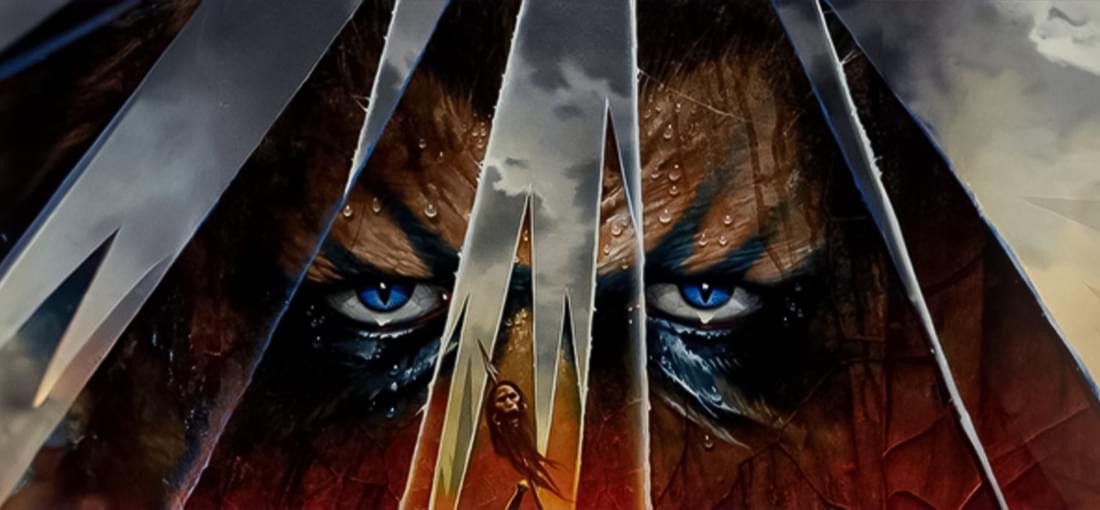
It is easy to understand why Blood Omen is a well-regarded game. The atmosphere is thick, the semi-open world concept with light Metroidvania elements intriguing, and both the excellent voice acting and competent writing help make the protagonist come alive in a way that wasn't too common in 1996. At the same time, I can't help but notice several flaws with the gameplay, which tend to bring the game down quite a bit. For the first couple of hours, the gameplay loop is quite entertaining: You hack away at enemies, get new spells and weapons, and explore the world with its villages and dungeons. Then, roughly a third into the game, you get a new spell called Repel, which breaks the gameplay on several levels. Instead of having to dodge traps and environmental hazards, you can now simply walk through them unharmed, and enemies cannot even touch you. The only thing you need is sufficient magic, which slowly regenerates over time. While more of an optional spell at first, Repel quickly becomes mandatory to beat the bosses and ever stronger enemies, so you're often relegated to either wait for your magic to fill up again or pop an item that gives you infinite magic for a time. Another issue is that whenever you leave a screen, slain enemies either respawn right where they were (this happens outdoors), or they come back as ghosts, whose attacks drain your magic instead of life. In short, since fighting enemies does nothing but drain your magic one way or the other and slow you down, I ended up simply running past them for a good portion of the game. Towards the end, the game throws dozens of hard-hitting foes at you, and instead of casting Repel all the time, I simply bailed. Clearly, this isn't exactly compelling gameplay, and a consequence of the Repel spell essentially breaking the game. You're too weak without it, but too strong with it. What you end up with is something needlessly dull and repetitive.
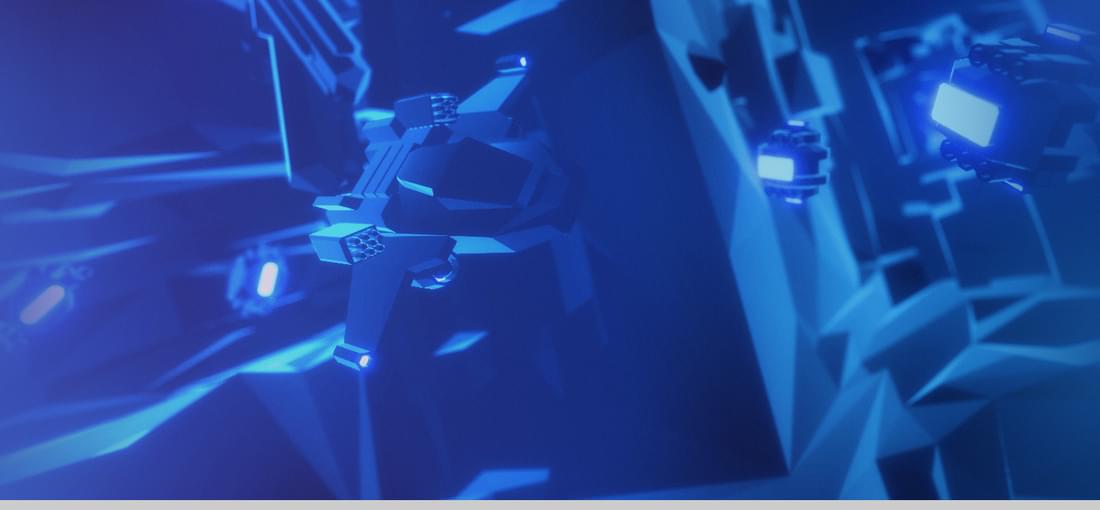
Fans of 6DOF games aren't exactly spoiled for choice. In the 90s, there's been Descent and Forsaken, whereas these days, there's Overload, Desecrators, and Sublevel Zero (SLZ). The latter two have another thing in common, which are procedural levels. Given that SLZ is run-based, resorting to randomized levels is a sound choice, but variety unfortunately is lacking. By the second run, you've likely seen all the assets, and the level design always follows the same pattern: If the path branches, one of the branches will lead to a challenge room and possibly include a keycard, whereas the other one takes you to the stage boss. These boss rooms are always the same, too, and after five runs in total you'll also have pretty much everything unlocked. In short, SLZ isn't a particularly lengthy or deep game. At the same time, the base gameplay loop is plain enjoyable. Flying around and shooting stuff feels great, the enemies all have different movement and attack patterns, and there are even some minor RPG elements, as enemies drop new hull, engine, and weapons modules, which can be combined to create new and better parts. Trying out new gear is always fun, and the game is easy enough to allow experimenting. Visually, SLZ is rather minimalistic in terms of textures and colors, which is contrasted with heavy bloom effects, though these can get a bit excessive at times. All weapons have satisfying sound effects, and while the soundtrack is more calm and collected than upbeat and driving like Forsaken's, for instance, I enjoyed listening to it throughout. In terms of bugs, I've had an instance where one of the challenge rooms didn't properly unlock, which necessitated a level restart, but other than that, it's been smooth sailing. All in all, Sublevel Zero may not be a masterpiece, but I enjoyed every minute I spent with it, and considering how fair the pricing is, I can recommend it wholeheartedly to fans of 6DOF games.
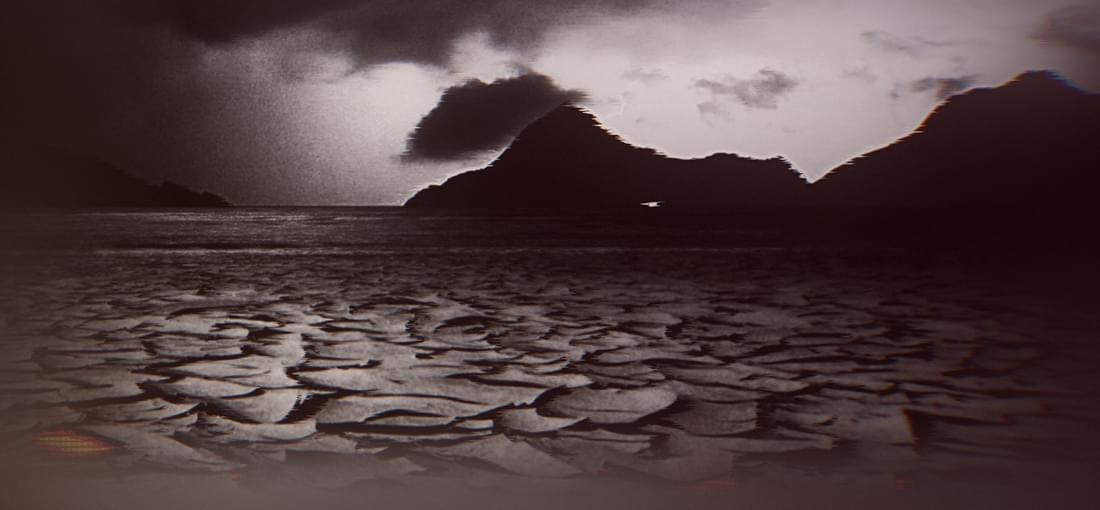
Nightdive usually delivers impeccable work, but Forsaken is one of their lesser efforts. While the remaster itself is competent, it suffers from very annoying bugs, mostly related to the save function. For instance, if one picks up a collectible item called crystal and then loads up a save prior to picking it up, it won't respawn again. The most impactful bug, however, are instances where creating a savegame will invariably crash the game. The only solution to this is to restart the level or continue playing from the last save. This bug has been around since 2018, yet to this day nobody at Nightdive could be bothered to fix it. Lastly, quicksaves do not work at all for me. The save bug is particularly bad due to how challenging of a game Forsaken can be. The levels are vast and open, and realizing where to go and how to progress isn't always easy, which is why some levels take upwards of 20 minutes to beat. In addition, the developers like to spawn enemies right behind the player or lay traps, requiring one to adapt a cautious approach. Over time, one learns how the level designers think and gets used to the difficulty, but some level of challenge is always present. Remarkably, Forsaken is almost always fair, save for instances where an environmental hazard kills one, and after respawning one has to pick up all of one's items in the same spot, which of course will kill one again. For situations like these, being able to save one's game beforehand is pivotal, but as mentioned, this fails sometimes. When it released back in 1998, Forsaken was one of the most graphically impressive games around, and it still holds up today. The washed out textures look surprisingly good, and the colorful weapon effects create almost psychedelic images. Coupled with the engaging soundtrack, Forsaken keeps one hooked throughout, and replayability is excellent due to the levels being stuffed with secrets. For those who can handle some frustration, Forsaken is worth a recommendation.
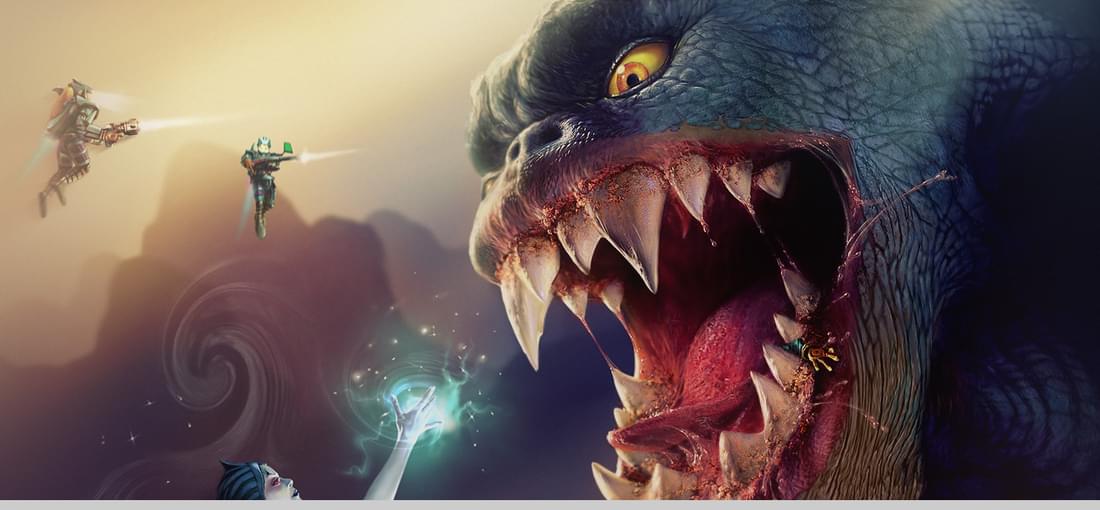
I've always been fond of the concept of Giants. Set in a still visually appealing alien world resembling a tropical island, Giants offers a great deal of variety on paper, as you get to play three completely different protagonists. The first campaign has you play as the Meccs, suit-wearing mercenaries that typically act in a group of three. Their missions are easily the most fun: You get to jump around with your jetpack, blast baddies left and right (although there are only two base types), and the tasks you're given are fairly varied, including a large RTS mission, which involves building a base and eventually taking on the enemy one. The difficulty can be punishing at times, especially considering the limited ability to save, but aside from that, the first campaign is good fun. The second campaign has you play as the sea witch Delphi, which still involves a decent bit of shooting, but mostly with a bow and the occasional spell. You even get to race several times, which works alright, and the RTS mission type makes a return as well. However, you have to do these no less than three times, and it always follows the exact same pattern, and against the exact same enemies. At this point, the game had already overstayed its welcome for me. The third campaign has you play as giant monster Kabuto, which is remarkably dull. Essentially, this comes down to being shot at by dozens of enemies, and all you can do is whack them and get annoyed by the unresponsive controls. There is zero variety, and even the mildly funny cutscenes, whose humor isn't really my type of thing, no longer happen between missions, which has this campaign feel like an uninspired, mindless slog. Owing to the latest community patch, I didn't encounter any bugs or issues during play, and the game looked and ran great. Still, the only reason I pushed through the second half of the game was the nostalgic value attached to it. I can appreciate how original Giants is, but it failed to hold my interest.
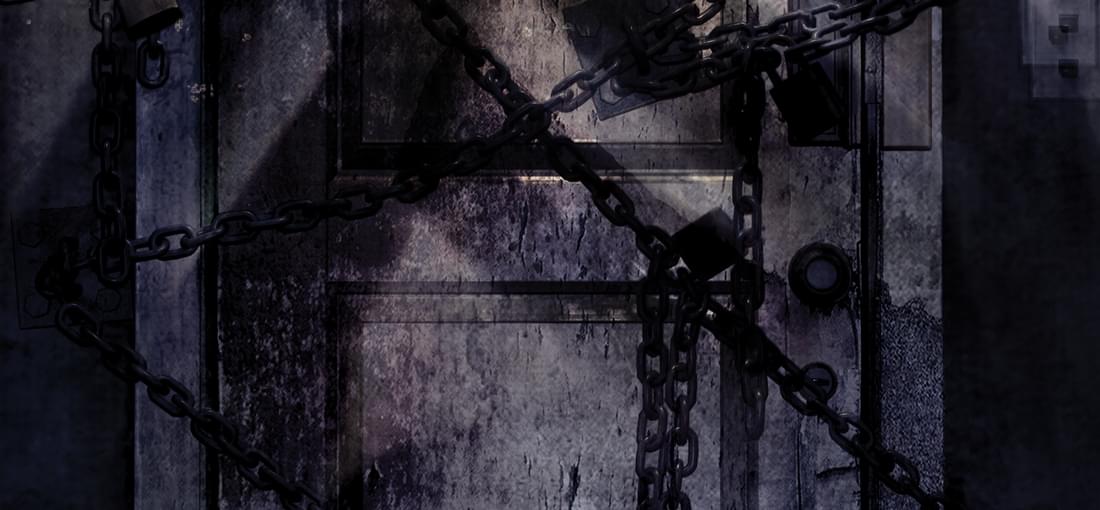
Upon release, Silent Hill 4 wasn't received too positively, as it did deviate from its predecessors in many key areas. 20 years later, these idiosyncrasies are what make SH 4 all the more worth playing. SH 4 is unique in that fighting enemies is both encouraged and discouraged. In the first half, Henry can always return to the titular "Room" to restore his health, and due to the emphasis on melee combat, running out of ammo is not a concern, so hacking away is favored. On the other hand, as the game progresses, Henry increasingly meets several foes either not susceptible to weapons at all or only very specific (and limited) ones. Even his "Room" will no longer be safe, creating a constant sense of danger and dread. Eventually, you'll also have to manage a second character, and how well you do that will heavily impact the possible endings, further upping one's agency. Visually, SH 4 is just as imaginative as its predecessors, and the greater range of locales only adds to the variety. Some criticized that you essentially visit every level twice, which is true, but due to the way the story unfolds, doing so makes a lot of sense narratively. Roaming around either in one's apartment or the otherworlds never gets old in any case, since the environments are filled with neat details and bits of lore throughout. The plot itself is of a similarly psychological nature as SH 2's, but more focused, somewhat akin to SH 3. Of course, the atmosphere is further enhanced by Akira Yamaoka's soundtrack, whose quality stands out even in a series so rich with excellent scores. The original PC port wasn't particularly good, but the GOG version already does a lot to remedy this. Widescreen resolutions are natively supported, controllers work out of the box and with sensible mappings, and the game looks and plays great. The only flaw remaining are the missing hauntings compared to the PS2 version, though these aren't too meaningful, and can be added through mods if desired.
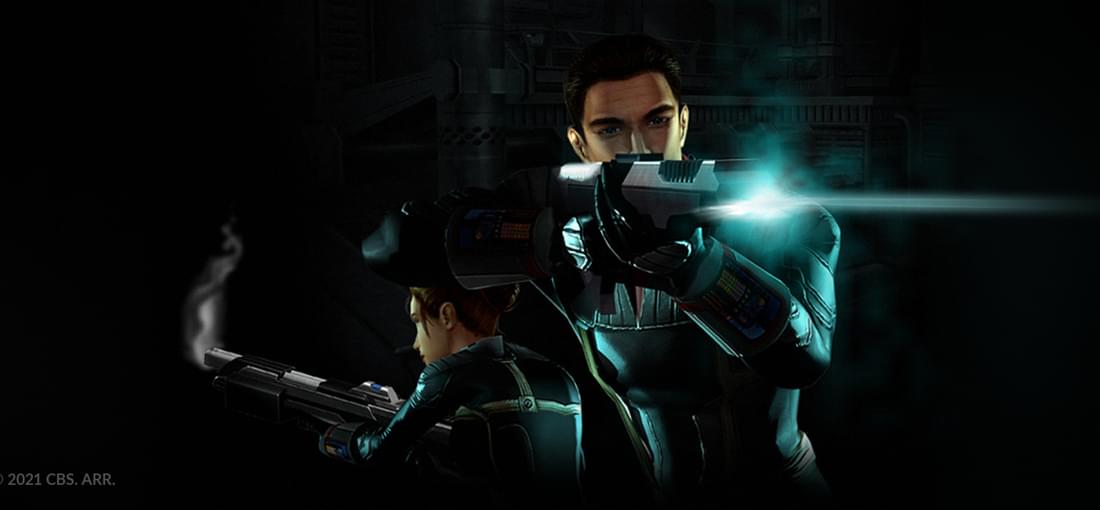
First of all, getting this to play nicely on current systems requires some work. One has to set a custom resolution for proper widescreen and run two cvars from the console: r_primitive 2 to fix performance in some of the later levels, and com_maxfps 80 to prevent the physics from breaking during a later low-gravity section. In addition, for that particular section, enabling a setting called "weapon aim" is necessary to be able to fully move a turret. By and large, Elite Force II follows the template established by its predecessor. Essentially, you're the protagonist of a TV episode, centering around the Enterprise-E this time. However, EF II is less strict about this, as you don't get to explore the ship as much, and the briefing-mission-debriefing structure has been loosened. While the plot isn't too exciting, it manages to keep one engaged, and humanity standing between two alien races fighting each other is a familiar yet alluring classic Trek trope. Even some light RPG elements are present, as you get to pick an answer in several dialogues here and there. In general, Ritual has been successful in creating a good deal of variety. Aside from shooting, there are simple puzzles involving the tricoder, escort missions, and a short turret section. Unlike the first one, EF II is actually challenging on the harder difficulties. The AI is still simple, but all enemies now have ranged attacks, and coupled with their numbers, can put some hurt on the player. As a result, EF II also takes much longer to beat (six hours for me on hard) than the criminally short first game. Some parts even can be a little too much, as a Nausicaan bouncer in particular has the rather annoying ability to hit the player at a range where the player can't hit in return. There's also a most fiery vent you need to move around in a very particular manner to get by alive. Still, minor frustrations aside, EF II is competently made and worth playing for both Trek and FPS fans.

Back in 1996, Powerslave (or Exhumed, as it was called in Europe) was released for the Saturn, Playstation, and PC. Though all versions shared the general plot, assets, and the excellent music, the PC version ran on the trusty Build engine, whereas the console versions used Lobotomy Software's own Slavedriver engine. In addition, the gameplay was quite different: The PC version has its focus on shooting and key hunting, whereas the console versions are mostly about platforming, along with some light Metroidvania elements. Powerslave Exhumed is essentially a port of the console versions, which are commonly regarded as superior to the PC version. Having played the PC version in a source port, I strongly disagree with this notion. At its core, Powerslave Exhumed is a console game, and this can be felt at all times. For instance, the player hitbox is incredibly large, making it needlessly difficult to dodge shots. In addition, the shooting is very basic, and the enemies pose little to no threat. There aren't even proper ammo pickups, instead the enemies drop weapon orbs which are applied to whatever weapon is currently equipped, which can be annoying if one accidently picks up orbs for the wrong gun. The challenge mostly comes from navigating the levels, which includes heavy platforming and dodging environmental hazards such as traps or lava. This is where the metroidvania elements come in: Some parts only become accessible once you have received a certain item, requiring one to revisit earlier levels. Since all the doors and enemies reset, this mostly serves to pad the play time, which is seriously short regardless. While the movement can be fun, everything else just feels incredibly basic compared to the PC version, which has much larger and more complex levels, way better shooting, and unique ammo for each gun. Nightdive did an excellent job with this version, but given the choice, I'd take the original PC version over this one any day of the week.
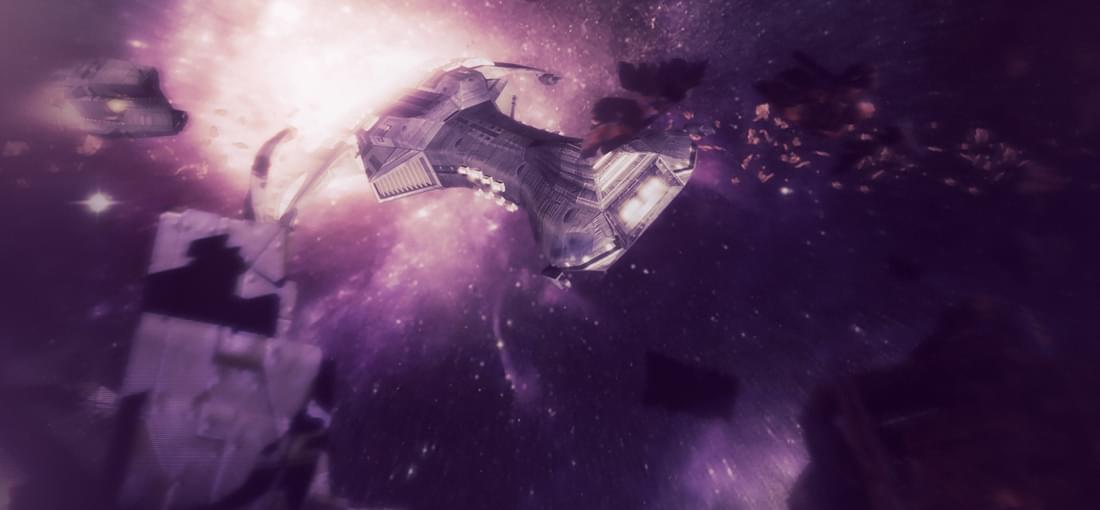
On paper, ORB is a serviceable Homeworld clone. The engine looks and runs great, controls are virtually perfect, the music is engaging despite being repetitive, and even the story is quite interesting. I also don't have much of an issue with the at times crushing difficulty, though saving often is definitely recommended, as the designers like to send large fleets against your forces right at the start of a mission, and if you don't have any leftover ships from the previous mission, the level becomes unwinnable. Rather, my biggest gripe is with the balancing. Unlike in Homeworld, where corvettes and frigates filled the gap between fighters and capital ships, the playable races in ORB only have fighters and capital ships. Fighters come in various sizes and armaments, but at the end of the day, they're all fodder for destroyers and carriers. Hence, you need capital ships to take out capital ships, and since tactical options such as formations, pilot behavior, or attack vectors aren't really a thing, every mission boils down to simply mass producing the strongest ship and overwhelming the enemy. Resources are always strictly limited, so strategic choices mostly boil down to what to research and build first. Thankfully, the enemy AI is usually subject to the same resource scarcity, which is why most missions follow the same pattern: find the asteroids with resources, memorize their positions, restart the level, and steamroll the enemy with the extra resources. There are only a select few missions which don't task you with destroying everything that moves, and those are easily the most fun. Still, the game is largely functional, and beating it sure felt like an achievement. Considering that the game is often on sale for less than $1, I'd say ORB is worth a try for Homeworld fans, but don't expect too much.